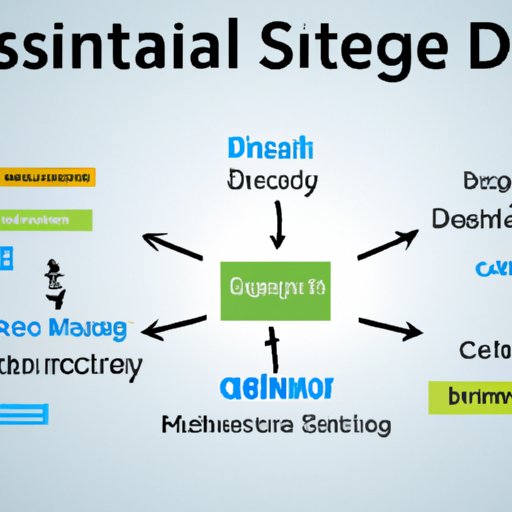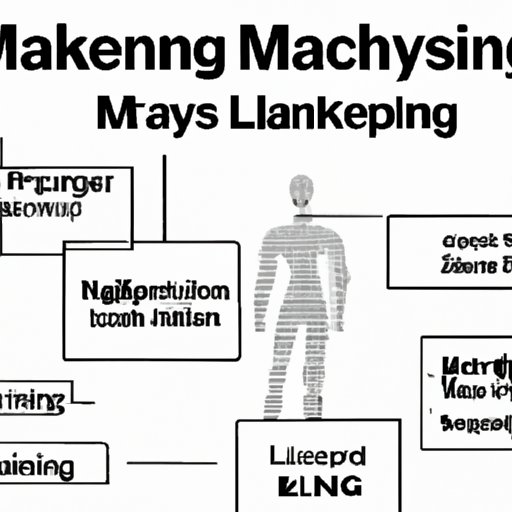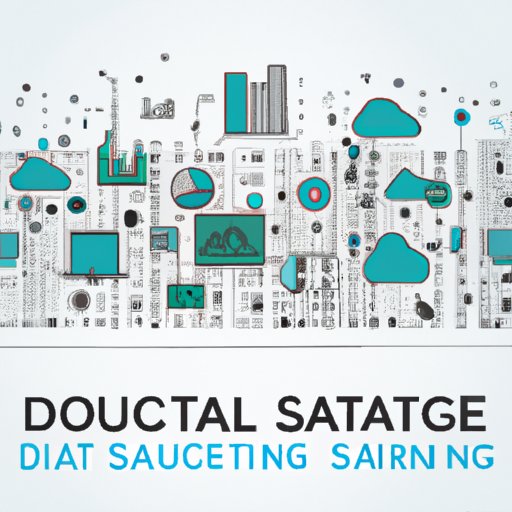Introduction
Data science is becoming an increasingly important part of our lives. It is used in a variety of fields, from healthcare to finance to marketing, and it is becoming more and more prevalent as technology advances. But what exactly is data science?
According to the Harvard Business Review, “Data science is the profession that harnesses the power of data to gain insights and make decisions.” In other words, data science is the process of using data to understand patterns and trends, and then making informed decisions based on those findings.

Developing a Data Science Strategy
Before you start using data science, it’s important to develop a data science strategy. This involves assessing your needs, creating an action plan, and identifying resources.
The first step is to assess your needs. What do you hope to accomplish with data science? Do you want to improve decision-making, increase efficiency, or enhance customer experience? Knowing your goals will help you determine which data science models are best suited for your specific needs.
Once you’ve identified your needs, you can create an action plan. This should include the steps you need to take to achieve your goals, such as collecting data, processing data, and analyzing results. It should also include a timeline and a budget.
The final step is to identify resources. This includes both human resources (such as data scientists or developers) and technological resources (such as software or hardware). Knowing what resources you have available will help you determine which data science models are most suitable for your project.
Exploring the Different Types of Data Science Models
There are several different types of data science models that can be used to analyze data. These include supervised and unsupervised learning, regression and classification models, neural networks and deep learning, and natural language processing.
Supervised learning is a type of machine learning in which data is labeled and algorithms are used to learn from the labeled data. For example, a supervised learning model could be used to classify images based on labels such as “cat” or “dog”.
Unsupervised learning is a type of machine learning in which data is not labeled and algorithms are used to find patterns in the data. For example, an unsupervised learning model could be used to cluster similar images together.
Regression models are used to predict continuous values, such as house prices or stock prices. Classification models are used to predict discrete values, such as whether an email is spam or not.
Neural networks and deep learning are types of artificial intelligence that use layers of neurons to process information. Natural language processing is a field of artificial intelligence that focuses on understanding and generating human language.
Understanding the Benefits of Data Science
Data science can provide numerous benefits to businesses and organizations. These include improved decision-making, increased efficiency, and enhanced customer experience.
Data science can help improve decision-making by providing insights into customer behavior, market trends, and product performance. This can help businesses make better decisions about pricing, product development, and marketing strategies.
Data science can also help increase efficiency by automating processes and streamlining workflows. This can reduce costs and free up employees to focus on more important tasks.
Finally, data science can enhance customer experience by providing personalized recommendations and targeted marketing campaigns. According to a recent survey by Accenture, “84% of customers say they are more likely to purchase products from companies that offer personalized experiences.”

Implementing Machine Learning Techniques
Machine learning is a type of data science that uses algorithms to learn from data. In order to implement machine learning techniques, you need to perform feature engineering, model selection, and hyperparameter tuning.
Feature engineering is the process of transforming raw data into features that can be used by machine learning algorithms. This includes extracting relevant features, normalizing data, and generating new features.
Model selection is the process of selecting the right algorithm for the task at hand. This involves comparing different algorithms and selecting the one that performs best.
Hyperparameter tuning is the process of adjusting the parameters of a machine learning algorithm to optimize its performance. This can be done manually or using automated techniques such as grid search or random search.
Utilizing Data Visualization Tools
Data visualization is an important part of data science. It allows you to explore data relationships, generate insights, and communicate results. There are a variety of data visualization tools available, such as Tableau, PowerBI, and D3.js.
Data visualization tools can be used to explore data relationships by creating charts, graphs, and maps. This can help you identify correlations, outliers, and trends.
Data visualization tools can also be used to generate insights. By combining data with visuals, you can uncover hidden patterns and draw conclusions.
Finally, data visualization tools can be used to communicate results. This involves creating visualizations that are easy to understand and interpret. This can help you present complex data in an understandable way.

Utilizing Automation and Cloud Computing Platforms
Automation and cloud computing platforms can be used to automate processes and store data. Automation can be used to deploy applications quickly and efficiently, while cloud computing can be used to store large amounts of data securely. Both of these technologies can help reduce costs and improve efficiency.
Automated deployment enables you to quickly and easily deploy applications without manual intervention. This can save time and money, as well as reduce errors.
Cloud-based data storage enables you to store large amounts of data securely and cost-effectively. This can help reduce costs and improve scalability.
Conclusion
In conclusion, data science is an important and powerful tool that can help businesses and organizations make better decisions, increase efficiency, and enhance customer experience. To get the most out of data science, you need to develop a data science strategy, explore different types of models, and utilize machine learning techniques, data visualization tools, and automation and cloud computing platforms.
By following this guide, you can maximize the potential of data science and unlock its full potential.
(Note: Is this article not meeting your expectations? Do you have knowledge or insights to share? Unlock new opportunities and expand your reach by joining our authors team. Click Registration to join us and share your expertise with our readers.)
